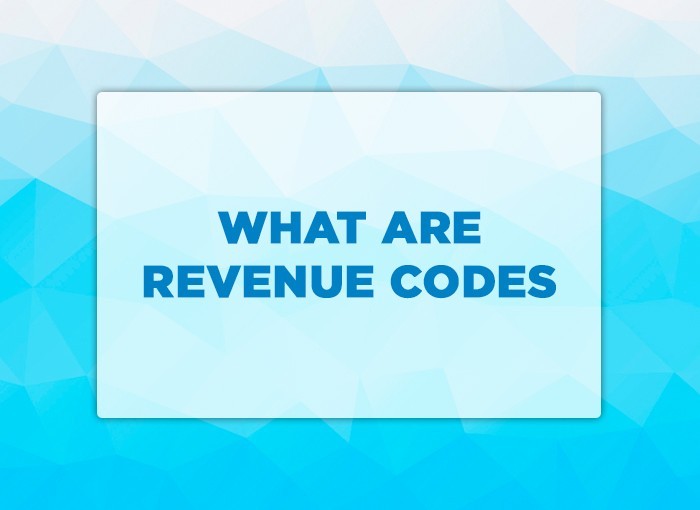What are revenue codes and how do they help in medical billing?
Revenue codes are 3 or 4 digit numbers that hold information about a patient’s treatment or services performed by health care providers. These are universal codes that are added to a hospital bill and are mandatory for a medical professional in order to submit a clean claim. The insurance company is liable to deny the submitted claim and withhold reimbursement of the rendered services in the absence of revenue codes.
Revenue codes are maintained by NUBC, the National Uniform Billing Committee. It is the governing body for forms and codes used in medical claims in the United States and was formed in 1975 by the American Hospital Association.
There are three sets of universal codes for hospitals for different health care goods and services.
- ICD-10 for diagnosis
- CPT – procedures
- HCPCS- for medical goods and services
These three and four-digit codes hold information about procedures held at different areas of a hospital and at different levels of treatment. They reveal to insurance companies whether a procedure was undertaken inside an operating theatre, an emergency room, a maternity ward, an intensive care unit, or elsewhere. Such information is critical and should be carefully captured as each of these areas and procedures use varied equipment, supplies, and expertise and thus hold highly different payment requirements that differ drastically from high to low.
These codes serve the purpose of grouping similar types of charges in one line on a UB-04 form or a bill form that is issued to patients while or after the services are being availed. For each line item charge listed on the claim for compensation, a revenue code must be listed alongside. Revenue codes have over a hundred categories, which are further divided to represent other specifications.
A revenue code starts with a 0, which is then followed by the other three digits. If a revenue code ends with a 0, the service is characterized as unspecified or general. When it ends with a 9, it represents ‘other’ services in any given category.
When a revenue code is accompanied by a supply code, it reveals details of the equipment used during procedures and whether the equipment was taken home by the patient or used in any particular ward of the hospital. These factors have major effects on the expenses of various operations.
Revenue codes are accompanied by procedure codes or CPT codes to indicate the kind of procedure or treatment a patient has undergone.
Out of the hundreds of revenue codes, the ones most commonly used are as follows:
- Code 250: It is used for pharmacy services
- Code 270: It is a generic code indicating all medical/surgical supplies
- Code 272: It is used for sterile supplies
- Code 274: It is used for prosthetic/orthotic devices
- Code 276: It is used for Intraocular Lens Implants (cataracts)
- Code 279: It is used for supplies
- Code 278: It is used for other implants
- Code 320: It is used for x-rays
- Code 370: It is used for general anesthesia (bill time as units)
- Code 379: It is used for other anesthesia (bill time as units)
- Code 490: It is used for Ambulatory surgical center ASC procedures
- Code 710: It is used for recovery room costs
These codes help the insurance companies with details about types of treatments, procedures, equipment, and supplies used, which further enable them to determine the claimed reimbursement amount. All this makes the process of reimbursement and payments of claims hassle free and prevents any complications, confusion, or rejections of claims. Codes are also used by medical billing and coding specialists to maintain a track record of patients for future diagnosis, treatments, case studies, surveys, etc. Medical coding plays an indispensable role in healthcare today. However, it is imperative for hospital management and coding specialists to be extremely careful while assigning these codes to bill forms. Any discrepancies on the part of the hospital caused due to the use of a wrong or an inaccurate code may be considered fraudulent and may attract civil action.



